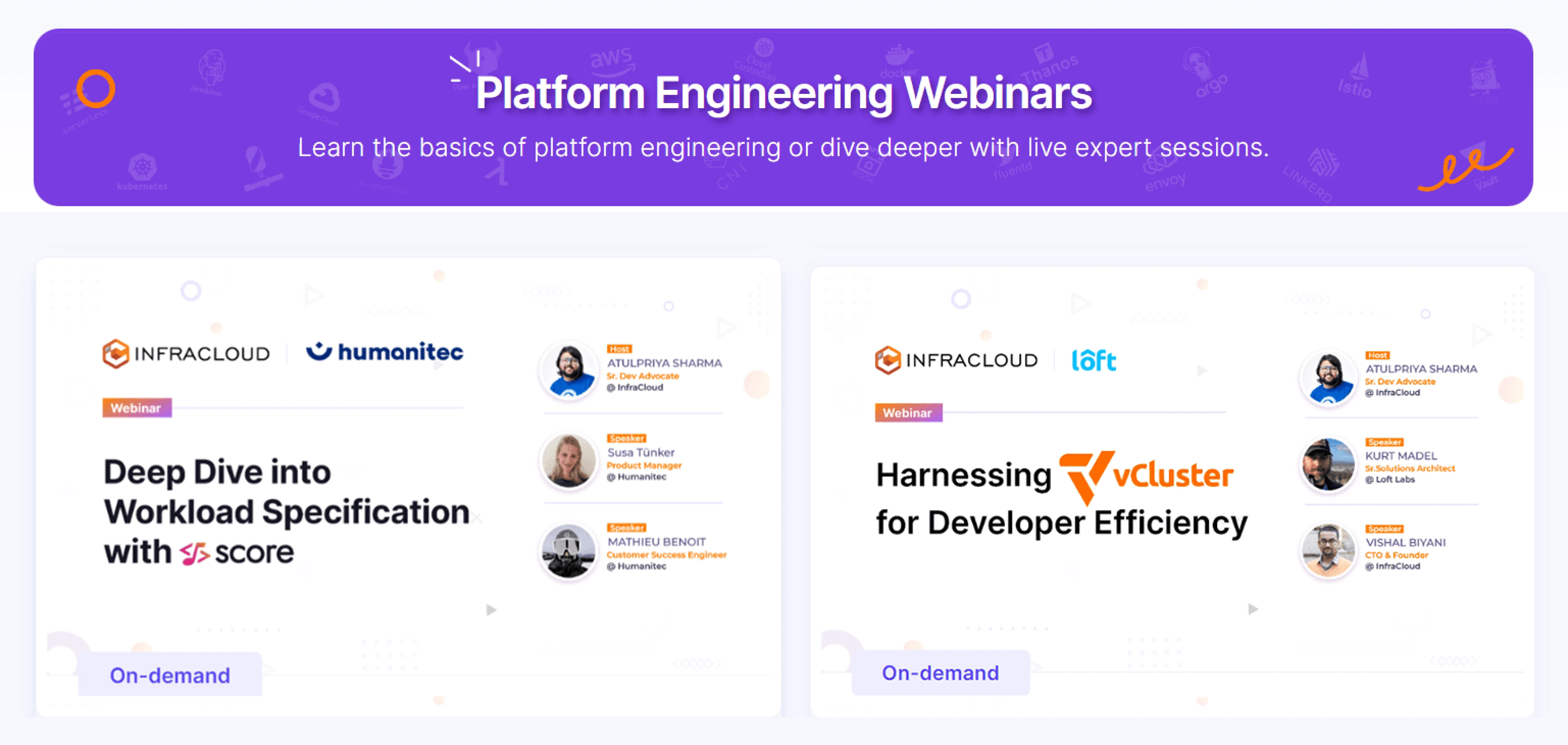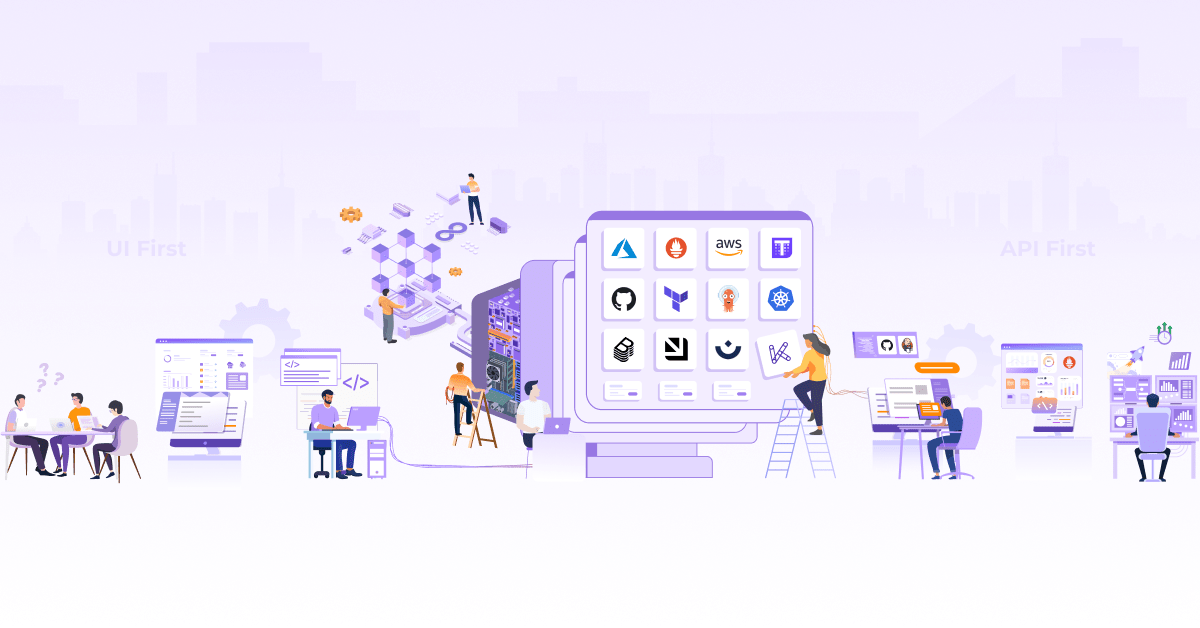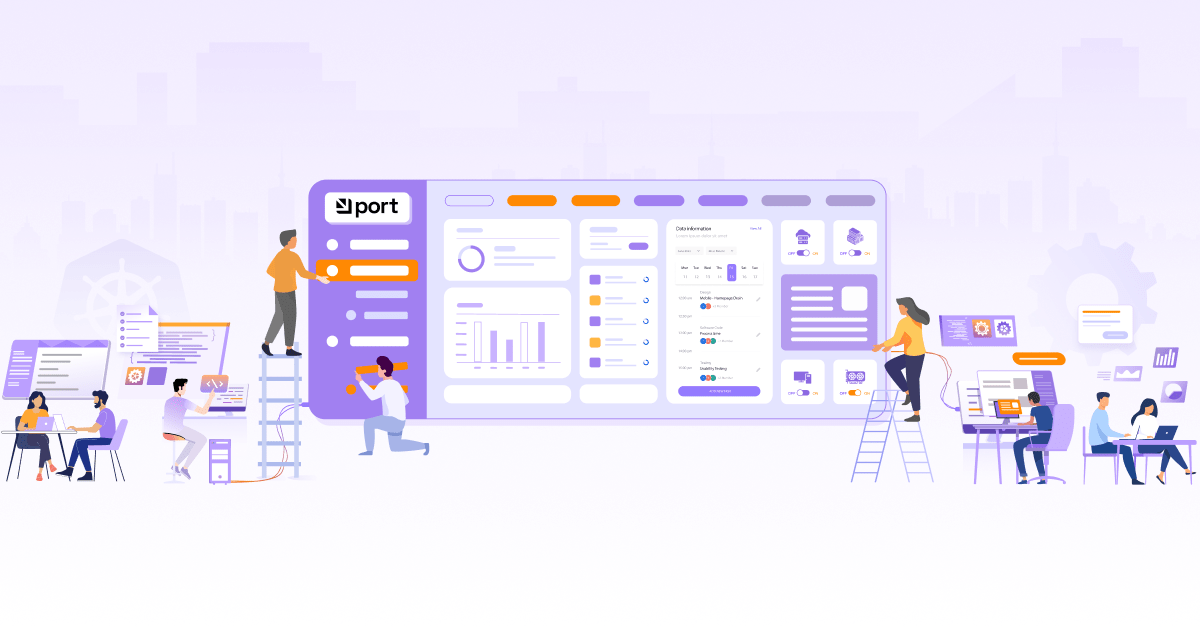
Key Elements of an Internal Developer Platform (IDP)

Developer platforms reduce developers’ cognitive load by abstracting away the various complexities of infrastructure and the development process, eventually improving their productivity and workflow. However, building a developer platform can be complex, and organizations could fail at it the first time. The primary reason is the lack of proper communication between the team building the platform and the team that will use it. Another reason for failing at platform engineering is not having clarity on what is important and what should be added to the platform. What are the elements necessary to build a helpful developer platform? And no, platform engineering is not only about tools or IDPs.
In this blog post, we will discuss elements critical to the success of developer platforms. Our developer platform team, which has built many platforms, helped us create this list.
Key elements of the developer platform
Here are the key elements that play an important role in the success of a developer platform:
- Service templates
- Workload specification
- CI/CD pipeline
- Testing infrastructure
- Environments
- Progressive delivery
- Governance & policies
- Infrastructure templates
Let’s take a detailed look at each.
1. Service templates
Service templates provide developers with pre-configured, standardized blueprints for common application components, significantly reducing the time and effort required to set up new services. Developers can quickly spin up new services that adhere to organizational best practices and standards. This not only accelerates development but also ensures consistency across your application ecosystem.
Templates can include configurations for various technologies, such as databases, message queues, API gateways, or entire microservices stacks. With them, developers can focus on writing business logic rather than spending time on repetitive setup tasks. They also reduce the likelihood of configuration errors and promote the use of approved, secure configurations.
Tools to help you with service templates: Dagger, Crossplane.
2. Workload specification
The gap between various workloads can lead to errors and inconsistencies, affecting product development. That’s why there’s a pressing need for a standardized approach to configuring workloads. This approach provides a standardized way to describe a workload’s resource requirements, scaling parameters, network policies, and other operational characteristics.
Workload specifications also play a crucial role in enabling portability across different environments and even cloud providers. By abstracting the infrastructure details, you can move workloads more easily between development, staging, and production environments or between on-premises and cloud infrastructures.
Tools to help you in configuring & managing workload specification: Buildpacks, Acorn, Dagger, Devfile.
Note: We discussed the importance of workload specification with the team at Score to discuss how it helps developers run the same workload on multiple environments. Learn more in this platform engineering webinar with Score.
3. CI/CD pipeline
Continuous integration and continuous deployment (CI/CD) pipelines automate the steps between a developer committing code and that code being deployed to production. This automation reduces manual errors, increases deployment frequency, and allows faster feedback cycles. Incorporating CI/CD pipelines into your IDP enables developers to focus on writing code while ensuring that testing, building, and deployment processes are consistent and reliable.
A well-implemented CI/CD pipeline in your IDP not only accelerates the development process but also improves code quality, reduces risks associated with manual deployments, and enables more frequent and reliable releases.
Tools to help you with CI/CD: Jenkins, ArgoCD, GitLab.
4. Testing infrastructure
Ensuring product quality is a critical part of the software development cycle. You cannot ship a broken product, which could harm your business and reputation. Testing has to be done in the similar environment as the production, with the proper resources and process. You have to enable your team to run the quality product test efficiently.
The platform you are building must have everything engineers need to test the product and their code. Proper information on configuring the right environment, mandatory tests, managing test data, reporting method, and benchmarking metrics - all should be readily available to make the platform successful and useful. Otherwise, the testing team would be clueless about testing, which would increase their cognitive burden, eventually leading to poor testing & product.
Note: We discussed the importance of testing and how to add it to the platform with the Testkube team. Watch the platform engineering webinar with Testkube to learn more.
Tools to help you in running tests: Testkube, EnvTest, Terratest.
5. Environments
Applications are typically developed on local machines and then deployed to testing environments. Later, they go to production for end users. For the application to work as intended in production, developers must have an exact local and testing environment. If these environments can be created easily and quickly, it will positvely impactthe developers’ productivity, as they don’t have to invest their energy in setting them up.
So, you must add the tools and processes to the developer platform to accelerate the deployment of various environments. Environments can be defined in a configuration language for reproducibility and quick self-service. Platform targets to keep the time to provision an environment minimal and minimize it further by constantly improving or introducing changes in evolving technologies.
Tools that can help you here: Env0, Spacelift, vCluster.
6. Progressive delivery
A wise way to test a product feature wouldn’t be to ask users whether they like it? However, releasing it to every user can lead to user dissatisfaction—that’s why developers test it with a small number of users, which is progressive delivery. If the response is positive, the changes could be rolled out for everyone.
Your platform should enable progressive delivery based on the needs of application teams. They should be able to deploy new features to a subset of users, perform experiments, scale up/down, collect data, and prepare reports to discover the findings. Progressive delivery is critical to any developer platform as it saves the team time, resources, and energy and makes developers’ lives easier.
Tools to add to the platform for progressive delivery: Flagger, FluxCD, ArgoCD.
7. Governance & policies
Defining governance and policies regarding the team’s role, permission, and responsibilities is an important aspect of platform engineering. Without it, the team members might be clueless about their duties towards the product. A clear understanding of who will be responsible for what part of the product development and management streamlines the workflow.
Every team member should be able to access the platform and overview their role according to their expertise. With policy as a code and automated compliance testing, you can ensure product quality, security, and compliance with the help of the developer platform.
Tools to help you with governance & policies: OPA, Paralus, Styra DAS.
8. Infrastructure templates
Infrastructure templates allow the easy and quick creation of services that application developers need. These templates can effectively accelerate developers’ infrastructure setup. Developer platforms must have well-documented infrastructure templates so teams can use them effectively.
Many companies have infrastructure teams that provision and manage infrastructure for developers. With the help of IaaC, you are reducing the distance between developers and infrastructure. There will be no friction because they will be the owner of IaaC, which can be run with a click to set up infrastructure.
Tools to help you with infrastructure templates: Terraform, Ansible.
Final words
Moving from DevOps, developer platforms can make a developer’s life easier, but only when equipped with the components that empower it to do that. Each factor of the developer platform discussed in this blog post plays a critical role in getting a platform for driving the development process’s efficiency, collaboration, and success. Besides, you must treat the platform as a product that keeps evolving with the user’s demands. A product mindset and software like Kratix, Backstage, and Port can help you achieve it.
The blog post is written by Sudhanshu with contributions from Faizan. We hope this article is helpful to you. If you have any questions regarding platform engineering, please feel free to send a message to Sudhanshu on LinkedIn. We also regularly conduct webinars with platform engineering industry leaders like vCluster, Devtron, Port, Crossplane, Last9, Spotify, and Middleware, which have given us deep insights that helped us shape this article.

To gain a deeper understanding of platform engineering, download a copy of our platform engineering reference architecture, and if you need help building a developer platform, reach out to our platform engineering consultants. You can also connect with Backstage consultants for Backstage-specific services.
References
Stay updated with latest in AI and Cloud Native tech
We hate 😖 spam as much as you do! You're in a safe company.
Only delivering solid AI & cloud native content.












